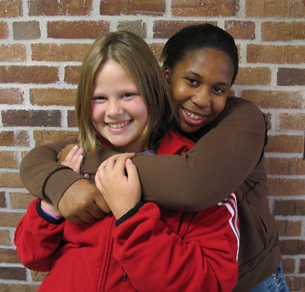Although our country has moved past the days of civil rights marches in the streets, Jim Crow Laws, and separate public facilities for blacks and whites, racism is still a very prevalent issue in American society today. Racism as an issue has also become more widespread in America's youth and young adult population. In order to stop racist youth from turning into racist adults who have the ability to further discriminate against those who they have prejudices against, those who are in control of school systems and lawmakers must find ways in order to identify these crimes and have strict punishment. Along with the recognition of racism as a problem in today's youth and young adult population, programs should be established in order to educate on the dangers of racism, how to identify it, and how to prevent it. The argument on this subject lies in the fact that some people feel that racially charged hate crimes are simply harmless practical jokes and should be treated as such.
Two cases that jump out in the news today that show youth/young adult racism are the cases of the Jena Six and the case of the rape and torture of the young African American women, Megan Williams. These cases of blatant racism have obviously shocked the American public and have been continually featured in the news over the past month. The case of the the Jena Six is one where something that was supposed to be and offensive racial joke ended up leading to violence and a significant community uproar. The differences between what is defined as a hate crime and what is considered a practical joke must be clearly defined and those that fall under the category of hate crime should be dealt with seriously. An argument that was presented against the case of the Jena Six was the fact that there were only two nooses hung on the tree, as opposed to three, which represents the KKK. Some argue that although there is history in America of the lynching of African Americans, the nooses should only be taken as a practical joke. In the case of Megan Williams, some argue that because Williams supposedly dated one of her attackers, the crime was not fueled by racism, but by something having to do with the past that they shared.
The lines of what should and should not be considered racism are not clear and there exists a strong need for clarification. Once the government is able to clarify, students and young adults can begin to be educated on the subject. One reason this hate that youth may have against other races is a sort of ingrained ethnocentrism for their own particular race. This certain ethnocentrism is probably more prevalent in the town of Jena, Louisiana where the case of the Jena Six took place. The population of the town where this incident took place is 85% white and the tree was known as one that only white students were allowed to sit under.
There are still cases from the Civil Rights Movement that exist that have never been solved. The American government must first address the issues that have not been addressed yet in the past in order to make way for a change in the future. The next step to addressing the problem is educating the youth of America in order to hope for a future that is free of racism. Once the youth are educated on how all races should be respected and treated equally. There are some groups present that address issues of racism in youth, and the numbers of these should be increased.
In conclusion, the issue of racism and crimes against those of a certain race are still very present in today's society. People tend to have a range of opinions on what should be defined as a hate crime and what should not, and it is imperative that these lines be defined in order to put an end to the violence. Harvard University has created a test that can determine if one has a preference for a certain race, try it out and see where you stand according to the test.
Wednesday, October 17, 2007
Subscribe to:
Post Comments (Atom)

No comments:
Post a Comment